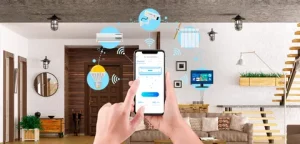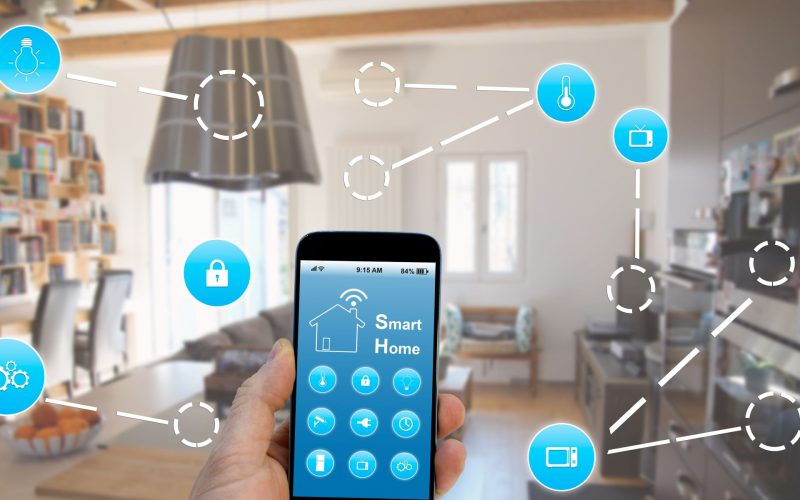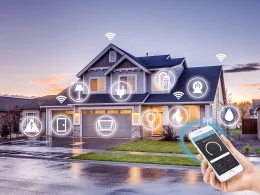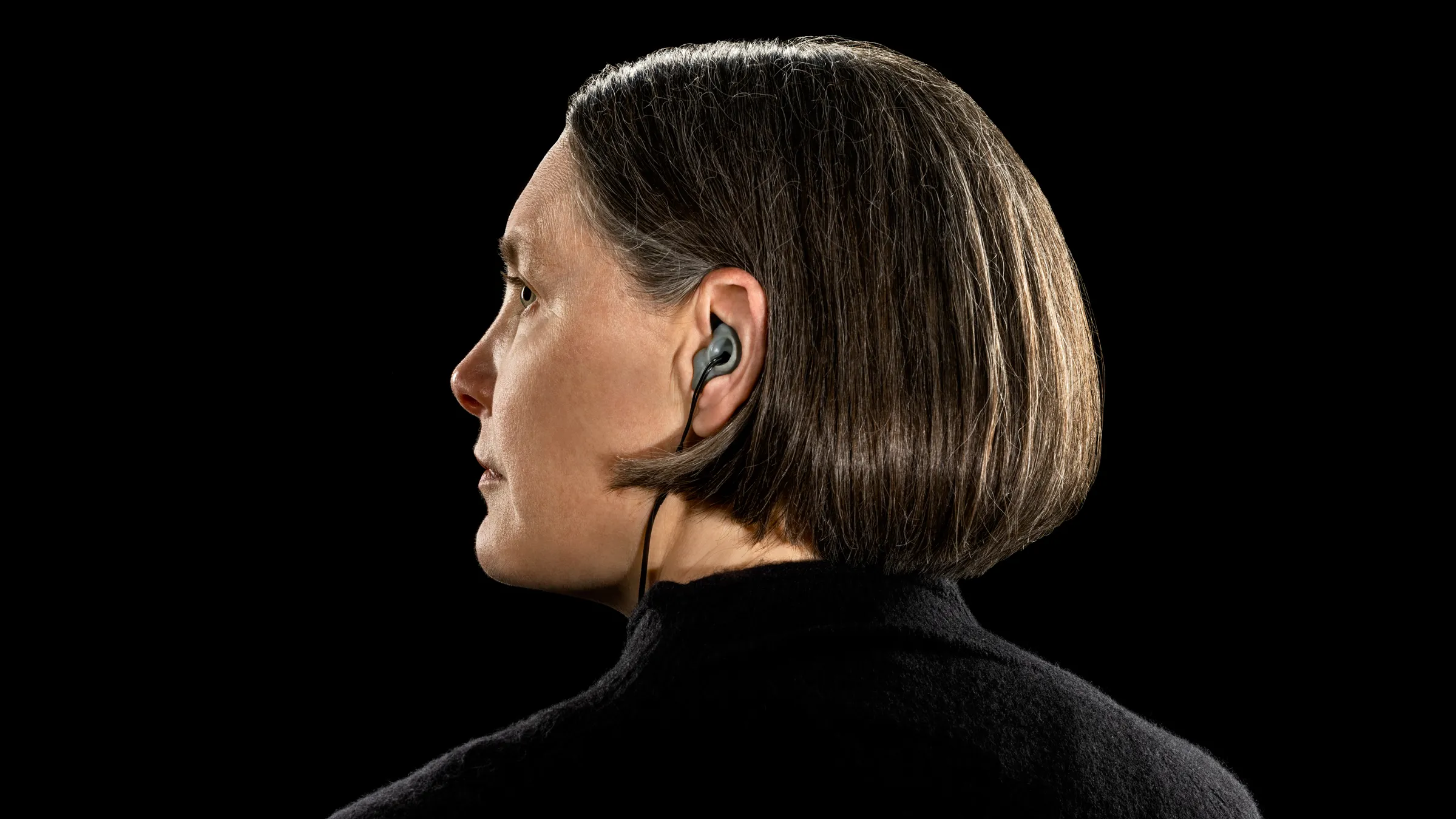The Benefits of Smart Home Devices: Transforming Modern Living
Smart home devices have transformed how we live, offering unparalleled convenience, energy efficiency, security, and more. Powered by advancements in artificial intelligence (AI), the Internet of Things (IoT), and sustainability-focused innovations, smart homes are reshaping modern lifestyles. This article delves into the benefits of smart home devices, supported by real-world examples, recent trends, and insightful case studies.
1. Enhanced Convenience and Automation

Benefits:
Smart home devices redefine convenience by automating repetitive tasks and integrating various home systems. With just a voice command or a tap on your smartphone, you can manage your home environment.
- Hands-Free Control: Devices like Amazon Alexa, Google Assistant, and Apple Siri enable seamless voice control over smart lights, thermostats, appliances, and more.
- Routine Automation: Imagine waking up to blinds opening automatically, coffee brewing, and your favorite morning playlist starting—all without lifting a finger.
- Interconnectivity Across Devices: The rise of Matter, a universal protocol, allows devices from different brands to work together seamlessly, reducing compatibility headaches.
Examples:
- Google Nest Hub: A central hub that connects and controls smart home devices, from adjusting thermostats to viewing doorbell cameras.
- IFTTT (If This Then That): Automates tasks like turning off all lights when you leave or sending you alerts when motion is detected.
Case Study:
Jane’s Automated Morning Routine Jane, a busy professional, integrated her smart devices using Google Nest and Alexa. Her morning routine is fully automated: smart blinds open at 7 AM, her coffee machine brews her favorite blend, and her smart speaker updates her on the weather and news. This automation saves Jane over an hour weekly, allowing her to focus on her work and family.
2. Energy Efficiency and Cost Savings
Benefits:
Smart home devices help optimize energy use, reducing both utility bills and environmental impact. These devices track energy consumption and adjust automatically to minimize waste.
- Smart Thermostats: Products like Nest and Ecobee learn your schedule and habits to maintain optimal temperatures efficiently.
- Smart Lighting Systems: LED bulbs such as Philips Hue not only use less energy but also dim or turn off when rooms are unoccupied.
- Energy Monitoring: Smart plugs and panels track energy consumption and provide actionable insights.
Examples:
- Nest Thermostat: Saves users an average of 10-15% on heating and cooling bills annually.
- Smart Solar Panels: Tesla’s Powerwall integrates solar energy into homes, storing excess energy for nighttime use.
Case Study:
The Johnson Family’s Energy-Saving Journey The Johnsons installed smart lighting, a Nest thermostat, and solar panels integrated with their home system. Within six months, they saw a 25% reduction in their electricity bill, saving approximately $600 annually. Additionally, their household’s carbon footprint dropped significantly.
3. Improved Home Security

Benefits:
Home security is one of the top priorities for smart homeowners. With real-time monitoring, advanced AI features, and remote access, smart security systems offer unparalleled peace of mind.
- 24/7 Surveillance: Smart cameras like Arlo or Ring provide live feeds and record suspicious activity, accessible from your phone.
- AI-Driven Alerts: Modern systems use AI to differentiate between harmless activity (like pets) and potential threats.
- Remote Access Control: Smart locks let you lock/unlock doors remotely and grant temporary access codes to visitors.
Examples:
- Ring Doorbell: Offers motion-activated video, two-way audio, and instant notifications, ensuring you never miss a visitor.
- August Smart Lock: Allows homeowners to track entry logs and control locks from anywhere.
Case Study:
Preventing a Break-In A smart camera installed in a suburban home detected unusual activity late at night. The homeowners, alerted via their smartphone, accessed the live feed and called local authorities. The AI-powered camera correctly flagged the activity as suspicious, helping prevent a potential break-in.
4. Better Health and Wellness
Benefits:
Smart home devices contribute to a healthier lifestyle by monitoring air quality, improving sleep, and even tracking personal health metrics.
- Air Quality Monitoring: Devices like Awair and Dyson’s air purifiers detect and eliminate allergens, pollutants, and even harmful gases.
- Sleep Optimization: Smart beds and trackers, such as Sleep Number, provide feedback on sleep patterns and adjust firmness or temperature for better rest.
- Mental Health Support: Smart lights like Philips Hue can mimic natural sunlight to boost mood, while devices like Hatch Restore aid relaxation through guided meditations and sleep sounds.
Examples:
- Withings Smart Health Products: Integrate scales, blood pressure monitors, and fitness trackers with smart home systems for comprehensive health management.
- Smart Mirrors: Devices like HiMirror track skin health and recommend skincare products based on daily analysis.
Case Study:
A Cleaner, Healthier Home for Allergy Sufferers The Patel family invested in a smart air purifier system integrated with humidity sensors. Their son, who has asthma, experienced a 40% reduction in symptoms as allergens and pollutants were consistently filtered out, improving his overall quality of life.
5. Remote Accessibility

Benefits:
With smart home devices, you can control your home from anywhere, whether you’re on vacation or at work. This ensures greater flexibility and security.
- Remote Monitoring: Check on your home, adjust settings, or view camera feeds in real-time from your smartphone.
- Control Appliances: Forgot to turn off the oven? A smart plug can cut power remotely, ensuring safety and energy savings.
Examples:
- SmartThings by Samsung: A robust platform that enables full remote control of compatible devices.
- HomeKit Secure Video: Allows users to check in on their homes securely while ensuring privacy.
Case Study:
Traveling Worry-Free When the Smiths went on a two-week vacation, they used their smart home system to remotely monitor their property. They received instant notifications of any motion near their home and were able to control lights to simulate occupancy, deterring potential burglars.
6. Increased Home Value
Benefits:
Investing in smart home technology increases property value, appealing to tech-savvy buyers and making homes more marketable.
- Energy Efficiency: Features like smart thermostats and solar integration are especially attractive to environmentally conscious buyers.
- Enhanced Security: A fully integrated security system is often seen as a premium feature.
Examples:
- A study by Coldwell Banker revealed that homes equipped with smart technology sell faster and for higher prices.
- Home Automation Systems: Brands like Control4 provide whole-home automation, adding significant value to luxury homes.
Case Study:
Higher Resale Value A realtor noted that homes equipped with full smart home systems sold 20% faster than traditional properties. Buyers cited convenience and cost savings as key deciding factors.
7. Environmental Benefits
Benefits:
Smart home devices promote sustainability by reducing waste, conserving energy, and integrating renewable energy solutions.
- Energy Optimization: Devices adjust energy usage dynamically, based on time-of-day rates or user behavior.
- Water Conservation: Smart irrigation systems like Rachio water gardens efficiently, reducing waste by up to 50%.
Examples:
- Solar Integration with Tesla Powerwall: Stores renewable energy for later use, ensuring sustainability and energy independence.
- Ecobee Thermostat: Adjusts HVAC systems to minimize carbon footprints.
Case Study:
Green Living Made Easy A family in California installed smart solar panels and a Tesla Powerwall. Their home became 90% energy self-sufficient, saving an estimated $1,200 annually and significantly reducing their environmental impact.
8. Robotics in Smart Homes
Benefits:
Robotic devices are becoming indispensable in smart homes, taking over mundane or time-consuming tasks.
- Smart Vacuum Cleaners: Devices like Roomba now include AI features to avoid objects and map rooms more effectively.
- Pet Care Robots: Products like Furbo and Petcube interact with pets, dispense treats, and monitor their activity.
Examples:
- Roomba Combo j9+: Handles vacuuming and mopping with advanced object recognition.
- Tertill Weeding Robot: Automates garden maintenance, removing weeds without chemicals.
Case Study:
Robotic Assistance for Elderly Care An elderly couple used a combination of robotic vacuums, pet care devices, and smart assistants to manage their home more easily, improving their independence and quality of life.
Conclusion
Smart home devices are no longer a luxury but an essential part of modern living. They provide unparalleled convenience, save energy, enhance security, and even contribute to better health and sustainability. As technology continues to advance, smart homes will only become more accessible and impactful, reshaping the way we live and interact with our spaces.
By investing in these technologies today, homeowners can enjoy a more efficient, secure, and enjoyable lifestyle while also preparing for the future.










